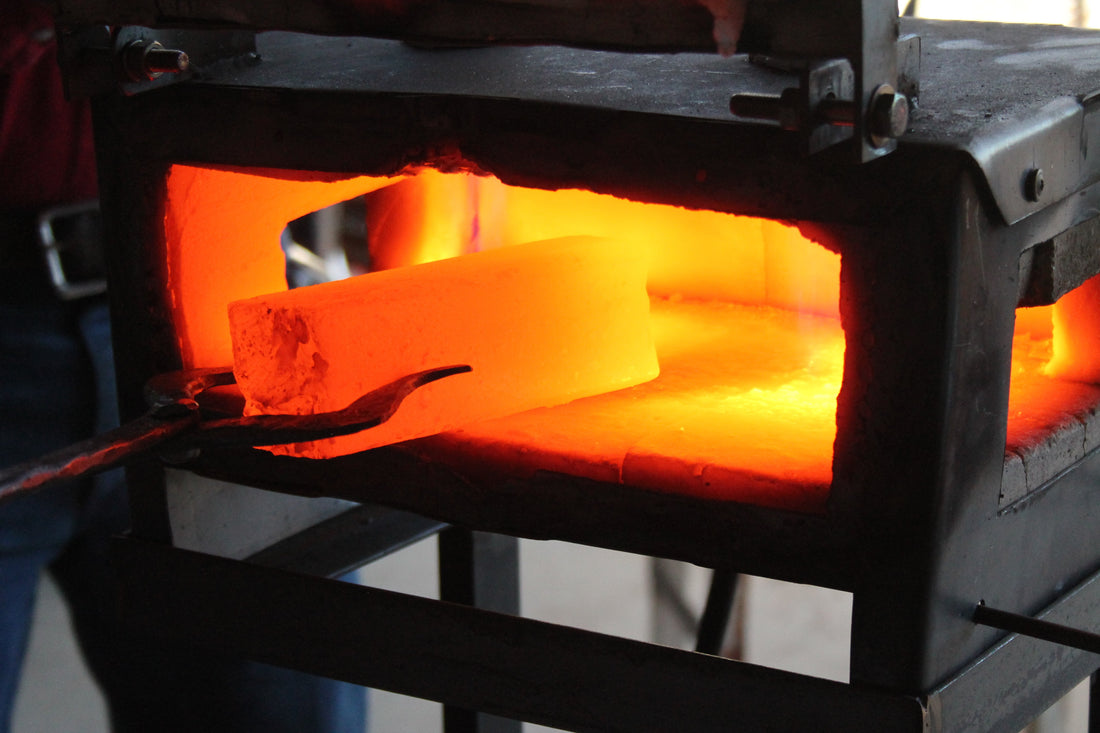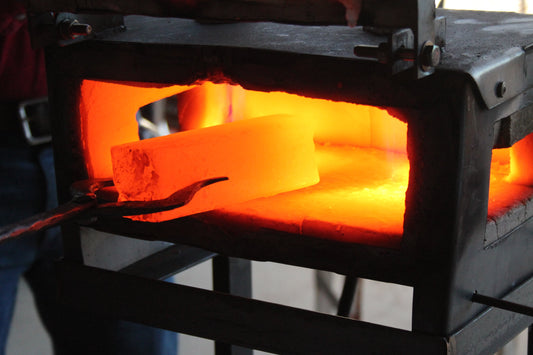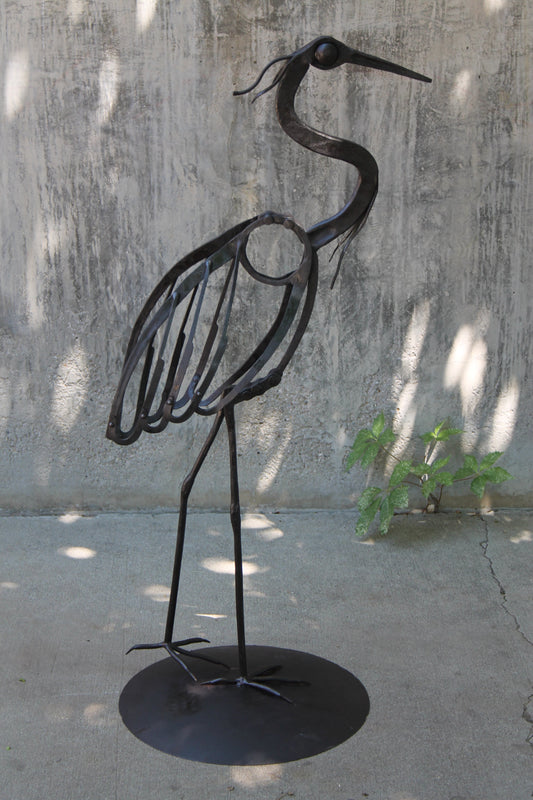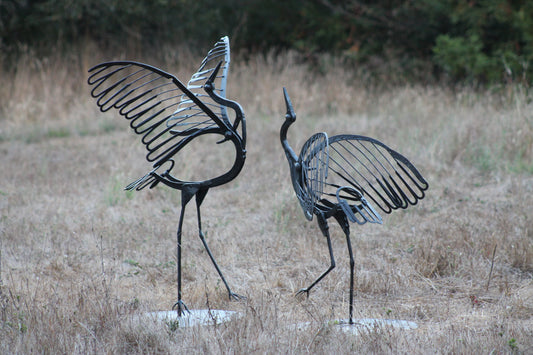Everyone in this world has experienced some degree of trauma. Some of us have more lasting effects from the injures of trauma. Call it Post Traumatic Stress Disorder (PTSD), Post Traumatic Stress Injury (PTSI), repressed emotions or just plain depression, everyone experiences it at some level. How we handle it depends on many things, the quantity and the quality of the trauma experienced, the age at which we experienced it this all plays a role in how we process life experiences. How well we are (or are not) prepared to deal with the challenges of live, effects our abilities to process those events and how they affect our day-to-day life. It is impossible to quantify the how’s and whys of experienced trauma on one individual compared to another. We all experience trauma and we could all use help dealing with it. Personally, I have found that blacksmithing helps me deal with some of the things I have experiences in my life and I think many others could benefit from it as well.
The obvious statement is hitting things really hard over and over can make you feel better. Several people I have talked to, both veterans adjusting back to “normal” life and first responders processing things they have seen on duty, have told me they were drawn to blacksmithing because they had an urge to hit things. While it can be relieving to hit things without negative out comes (like arrest records or the loss of friends) There is more to it than just the act of hitting things.
The physical act of doing something with your hands that requires your brain to function at some level keeps you engaged and alert but gives your brain enough power to process whatever is most important for your brain at the time. If you are doing a repetitive action like forging, drawing out tapers or forging heavy pieces that take many heats, you don’t have to concentrate as much on the work, so your brain has more band width to do other actions. The physical act of do something is an important aspect of this. Activity stimulates the body and the mind. The heart and lungs are working, pushing blood and oxygen to the brain. In contrast to an activity like watching TV where your body is not stimulated and your brain only has to work at the very lowest of level, you are not engaged enough to truly process anything at a worthwhile level. Being active doing something that does not fully consume your intellect, allows your brain to process and helps keep your thoughts from wondering into destructive territory.
The human understanding of how our brains operate has been murky at best, for most of our existents. Thanks to new technology there has been great improvements in the understanding of the human brain just in the past ten to fifteen years.
There are lots of big Latin words to describe the parts of the brain and how those parts function together. Despite my efforts I have not done a good job of remembering all of those fancy words. So I am going to do my best to explain it in a very rudimentary style, hopefully my simplicity will make it easier to comprehend the point I am making.
We experience things with the left side of the brain. At night when we sleep those experiences are filed away in our long term memory on the right side of brain. As our brain files those experiences it chooses which ones to keep and which ones to through away, and it connects those experiences with other memories in a filing system that is beyond understanding and sometimes down right coco pants.
When we experience trauma, our brains go into fight or flight mode. The basic animal preservation instinct we have all heard of. What we experience in fight or flight mode, can be filed away while we sleep on the right side of the brain and we can carry on with our lives, usually. There are some occasions where this doesn’t always function like it is supposed to. Like extended periods of trauma, like first responders or war veterans. There are also the effects of experienced trauma, that is beyond a person’s ability to comprehend, like witnessing a violent crime or a terrible car accident. These are just obvious examples of trauma for the sake of this discussion. There are many more types of traumas and they are not all the big traumas that may come to mind first. They may be the little “T’s” of trauma as well, childhood neglect, or verbal abuse. I am not here to say one trauma is worse than another, or “you only have PTSD if…” I am just here talking about dealing with it.
When we experience something in “fight or flight” mode and our brains are unable to process it (aka file it away in long term memory) we can become stuck in a “permanent” state of fight or flight. Always on alert, always on edge, volatile, quick to anger, basically never at rest. Once again this is a grouse over simplification of this process. So how do we “fix” his situation? How do we allow the brain to file these experiences away and help the person turn off the fight or flight mode?
There are several way to help this type of situation, talk therapy, EMDR, medication etc. Now we are going to add blacksmithing therapy to that list. If our brains are unable to fully process an experience, we need to help it out. Two things that blacksmithing has that can help, is physical activity and creativity.
We all know exercise and physical activity is good for us. It releases endorphins, helps with cardo, gets the blood flowing, all that good stuff. Unlike exercise, a physical activity like blacksmithing requires movement and action that requires concentration, this keeps our brains active on a higher level than just running a few miles. If we are doing something with our hands, like trying to make something, the conscious part of our brain can be focused on the that, while our subconscious brain can process the experiences of our life.
This leads us to the creative part of blacksmithing. Studies have found that being creative, whether its writing, painting, or forging, it activates parts of our brain that are normally not engaged. This increased brain activity allows for more and new path ways for our brain to process. The increased activity and neuropathways, allows the brain to process not only whatever is being created but also other things the brain as been unable to deal with.
The combination of physical activity and creative activity is what makes blacksmithing so great for this. You are doing something with your hands, exerting yourself physically but at the same time opening your brain to the increased benefits of creativity. The combination allows for more productivity when compared to say jogging or painting, a physical activity with little creativity or a creative activity with little physical excursion.
An additional benefit of blacksmithing is the community aspect. Despite the commonly held idea of the solo blacksmithing toweling away in his shop, throughout history the blacksmith shop was a center piece of communities. The blacksmith shop was always warm in the winter and full of people in the summer having repairs done on farming equipment or getting new shoes on horses. Today the community surrounding the craft of blacksmithing is still strong, there are many blacksmith associations across the country and the world. Forging is a very hands-on learning experience, which requires togetherness. Most blacksmith associations host classes, conferences and other gathers, all good places to build community and find support.



